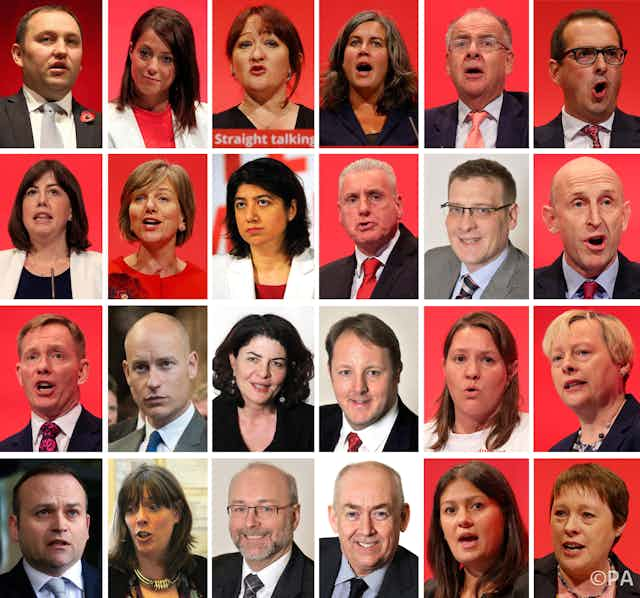Those with long memories will have a sense of déjà vu about the war currently raging between the grassroots of the Labour Party and its parliamentarians. Talk of splits is familiar. It all hearkens back to 1981, when four senior Labour Party figures broke away to found their own centrist party, the SDP.
Stepping outside the “big two” is a perilous path in politics. But while the SDP lasted just seven years, there are reasons to believe a breakaway group would have a greater chance of survival these days. Forming an alliance with liberals, just like the SDP, could be a good option for Labour parliamentarians who are fed up with leader Jeremy Corbyn.
Division is nothing new to Labour. It’s good old-fashioned politics to see the hard left clashing with the rest of the party. In the past it was Michael Foot, nuclear disarmament and the power of the unions that caused all the tension. Today it’s Corbyn, austerity and Brexit.
The Party’s Militant Tendency prevented Foot from mounting a credible challenge to Margaret Thatcher – and today divisions within the party are holding it back from capitalising on the deep division in the Conservative Party.
Politically, this is a familiar fault-line in the factionalised Labour Party but the stand-off is now coupled with new leadership rules that present a genuine logistical crisis. Unless Corbyn voluntarily resigns, a split looks inevitable.
The leadership question
Another key difference is the important question of leadership. Back in the 1980s, there was an abundance of quality leadership. In 2016, it is less apparent.
In 1981 the inspirational Gang of Four, the politicians who broke away from Labour were formidable former office holders – Shirley Williams, Roy Jenkins, David Owen and Bill Rogers – and took with them 28 defecting Labour MPs. It was a top-heavy, leadership driven, move. In 2016 we appear to have a Gang of 172. That’s how many MPs voted against Corbyn in the recent vote of no confidence, yet nobody is coming to the front to lead them.
It is precisely the current lack of leadership in Labour that created the vacuum for Corbyn to fill. Any new entity needs strong, and focused leadership with a clear single voice. The SDP struggled under the personalities of its four powerhouse leaders – who fought among themselves, contributing to its ultimate downfall.

Then comes the question of party organisation. The SDP had no grassroots, no infrastructure, no basis for a nationwide membership structure, and no means by which to organise a seat-by-seat challenge across the country at a general election. By contrast the Liberal Party had all these things, but failed to get any media attention. It looked like a spent force and, behind the scenes, faced bankruptcy. Each had something the other wanted and an alliance was born. Both parties agreed to work together and fought two general elections, before merging permanently in 1988 to become the Liberal Democrats.
Here there is a significant similarity between 1981 and the present day. The Liberal Democrats are a stubborn bunch, who continue to battle on at the centre of British politics despite suffering such a massive electoral defeat in 2015 that they now have just eight members of parliament.
As things stand, the Liberal Democrats have much to offer those wishing to break away. They have an extra-parliamentary organisation including significant, well-organised and committed grassroots. Since the 2015 election defeat there has been a massive swell in membership and commitment to Tim Farron’s fightback campaign.
The challenges would obviously be vast: the parties would need to overcome decades of tribalism, work out an electoral pact, divide up leadership positions and prepare for the painful process of rewriting a constitution. Labour will also need to forgive the Lib Dems for propping up Cameron’s first government in the 2010-2015 coalition. It could be done though – and the party that emerges from a realigned centre-left may be the only hope of taking on the Conservatives.
Changing electorate
The final consideration is the electoral system. Britain’s first-past-the-post system favours a contest between two big parties and works against third party or small challengers. Despite high hopes – and sometimes a poll rating in excess of 50% – the Alliance was still only able to win 23 seats in the 1983 election.
Party politics these days are, however, more de-aligned and fluid. The 2010 election delivered a hung parliament and gave the third party a direct share in national office in the form of the Conservative-Liberal Democrat coalition.

The electorate has got wise to tactical voting and the third party has mastered its targeting strategy. There are also now more smaller parties playing a part. Single-issue groups operating outside the party domain – and newer entities within it (UKIP, the Greens, SNP, Plaid Cymru) – are mopping up segments of the fragmenting electorate. A savvy electorate knows how to get what it wants, and an anti-Tory pact is already under discussion.
The SDP failed, but the Liberal Democrats did not. History tells us that new small parties die, but bigger merged parties survive. In order for this to work they need to have something of equal importance to trade, they need strong focused leadership and they must strike while their bigger rivals are in disarray.
The SDP failed for many reasons – indeed had its founding supporters realised it would ultimately join forces with the Liberals, many would have stayed in the Labour party. With the benefit of hindsight they may well want to stay, but Corbyn can make that a very long game, one his more ambitious colleagues are unlikely to simply sit out.

